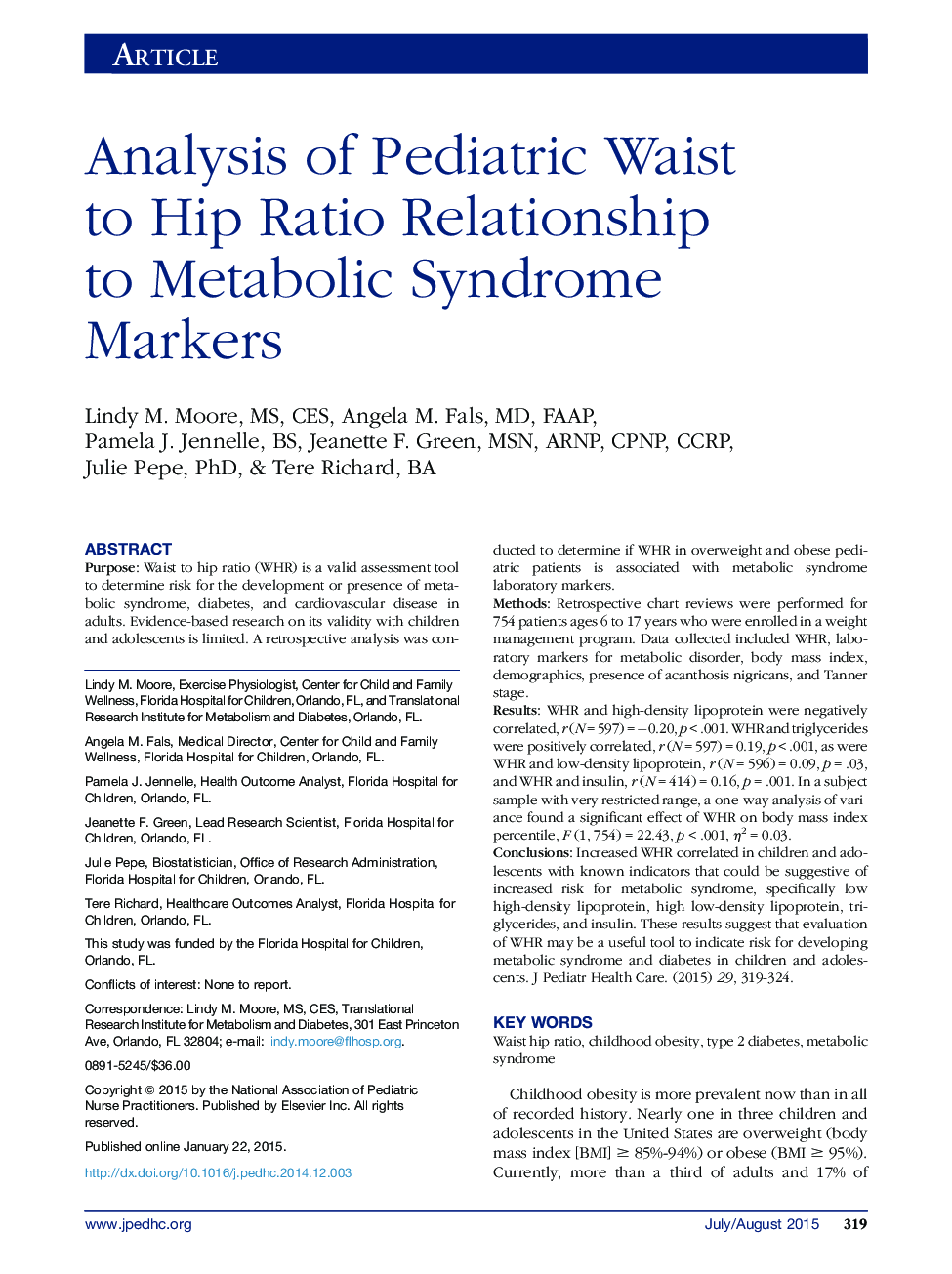| Article ID | Journal | Published Year | Pages | File Type |
|---|---|---|---|---|
| 2662708 | Journal of Pediatric Health Care | 2015 | 6 Pages |
PurposeWaist to hip ratio (WHR) is a valid assessment tool to determine risk for the development or presence of metabolic syndrome, diabetes, and cardiovascular disease in adults. Evidence-based research on its validity with children and adolescents is limited. A retrospective analysis was conducted to determine if WHR in overweight and obese pediatric patients is associated with metabolic syndrome laboratory markers.MethodsRetrospective chart reviews were performed for 754 patients ages 6 to 17 years who were enrolled in a weight management program. Data collected included WHR, laboratory markers for metabolic disorder, body mass index, demographics, presence of acanthosis nigricans, and Tanner stage.ResultsWHR and high-density lipoprotein were negatively correlated, r (N = 597) = −0.20, p < .001. WHR and triglycerides were positively correlated, r (N = 597) = 0.19, p < .001, as were WHR and low-density lipoprotein, r (N = 596) = 0.09, p = .03, and WHR and insulin, r (N = 414) = 0.16, p = .001. In a subject sample with very restricted range, a one-way analysis of variance found a significant effect of WHR on body mass index percentile, F (1, 754) = 22.43, p < .001, η2 = 0.03.ConclusionsIncreased WHR correlated in children and adolescents with known indicators that could be suggestive of increased risk for metabolic syndrome, specifically low high-density lipoprotein, high low-density lipoprotein, triglycerides, and insulin. These results suggest that evaluation of WHR may be a useful tool to indicate risk for developing metabolic syndrome and diabetes in children and adolescents.
